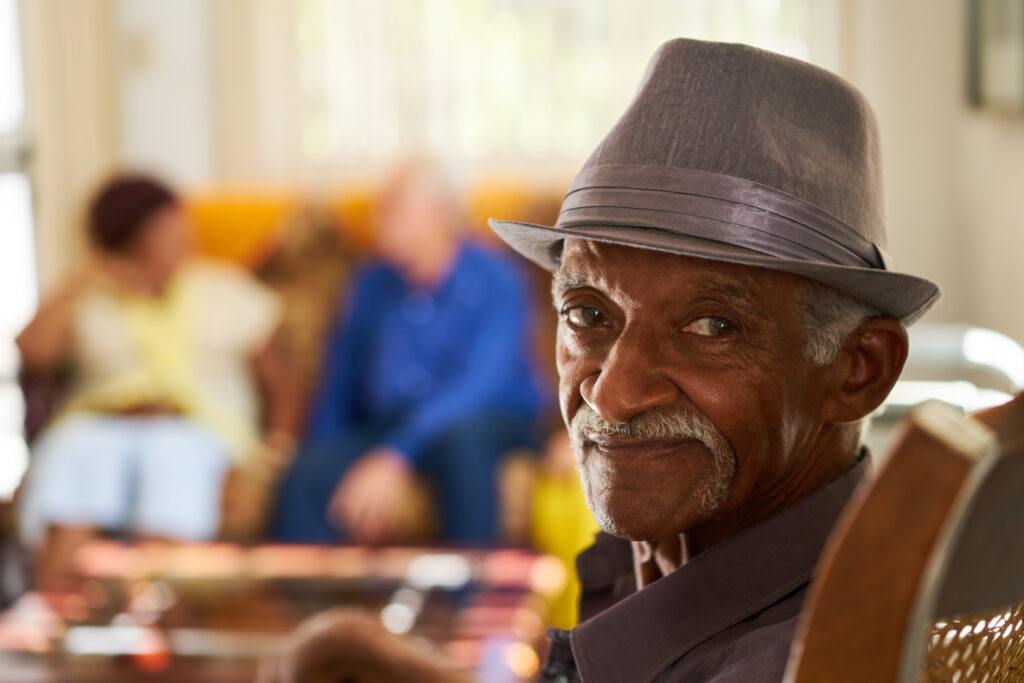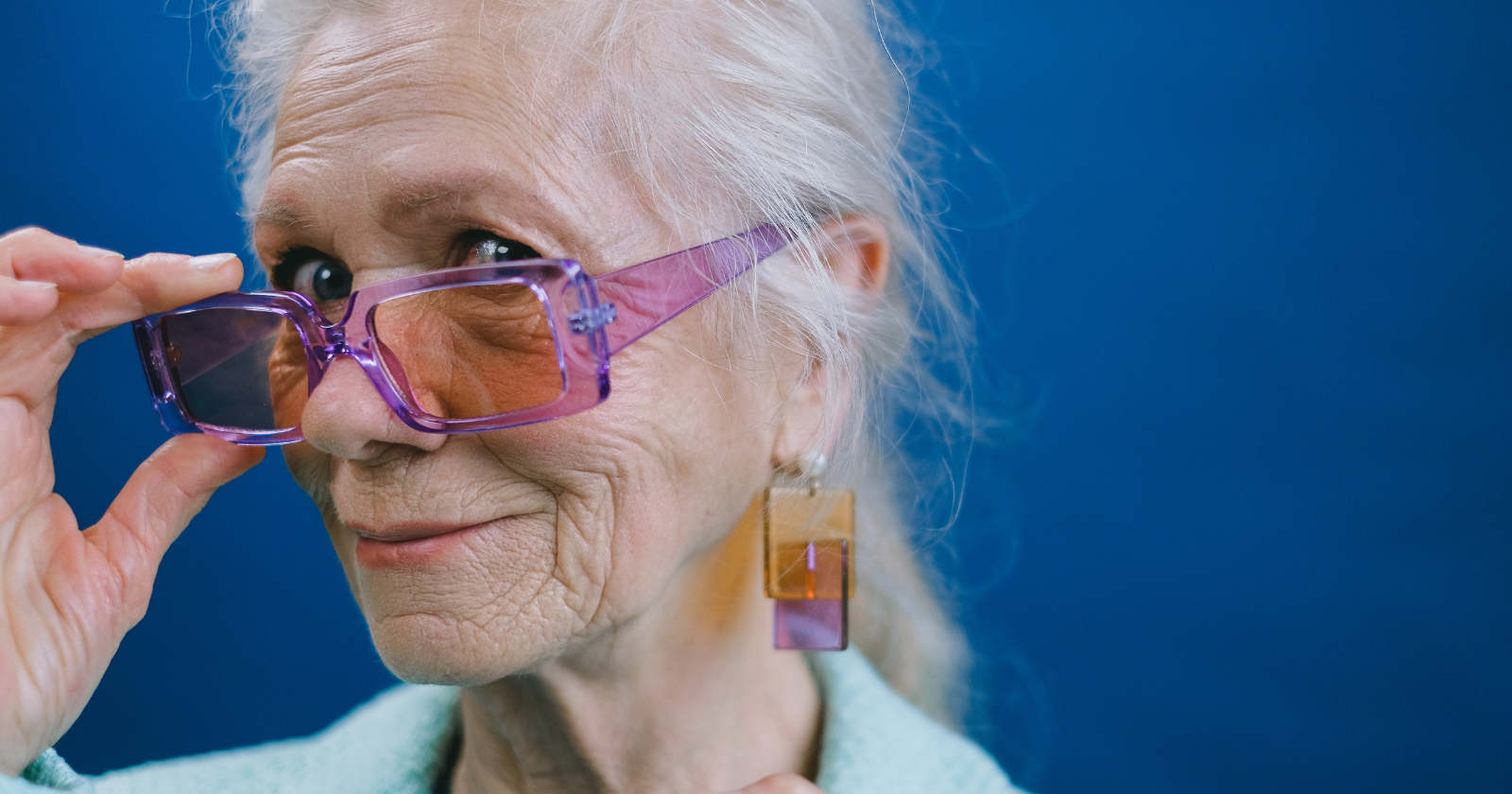For seniors with vision problems or low vision, there are several ways How To Help Elderly With Vision Problems. Here are some tips on how you can get the help you need. Whether it’s from family, friends, or professional services, don’t be afraid to ask for help with your vision needs. There are many people who care about helping seniors maintain their independence.
Let others know how they can help you by reading this blog post. All ages eventually experience a decline in eyesight and this is especially true for elderly individuals over the age of sixty-five. While most cope by adjusting to the changes in their sight, those with more severe cases may find that they require more help than ever before. If your elderly loved one is having difficulty seeing, read on for tips on how to help.

Eye Health – It’s Important
It is important to stay visually healthy with regular exams. The American Academy of Ophthalmology recommends individuals age 65 and older get a dilated medical eye exam every year or two, which will evaluate their eyesight as well check for new conditions that may have developed since the last visit; they also recommend maintaining current prescriptions if any eyeglasses were prescribed at some point too!
You may not know that your loved one’s eyesight is being compromised as they age if you don’t pay attention to these signs. Caregivers can help monitor a senior’s vision by looking out for an increase in any of these symptoms:
- Squinting or tilting their head when trying to focus.
- Bumping into things or knocking objects over.
- Discontinuing everyday vision-based activities like reading or writing.
- Missing objects when reaching for them.
- Falling or walking hesitantly.
The risk of an accident is more than likely going up. You should talk with your loved one and get him/her checked out by the doctor as soon as possible because there could be some serious eye diseases that we don’t know about yet!
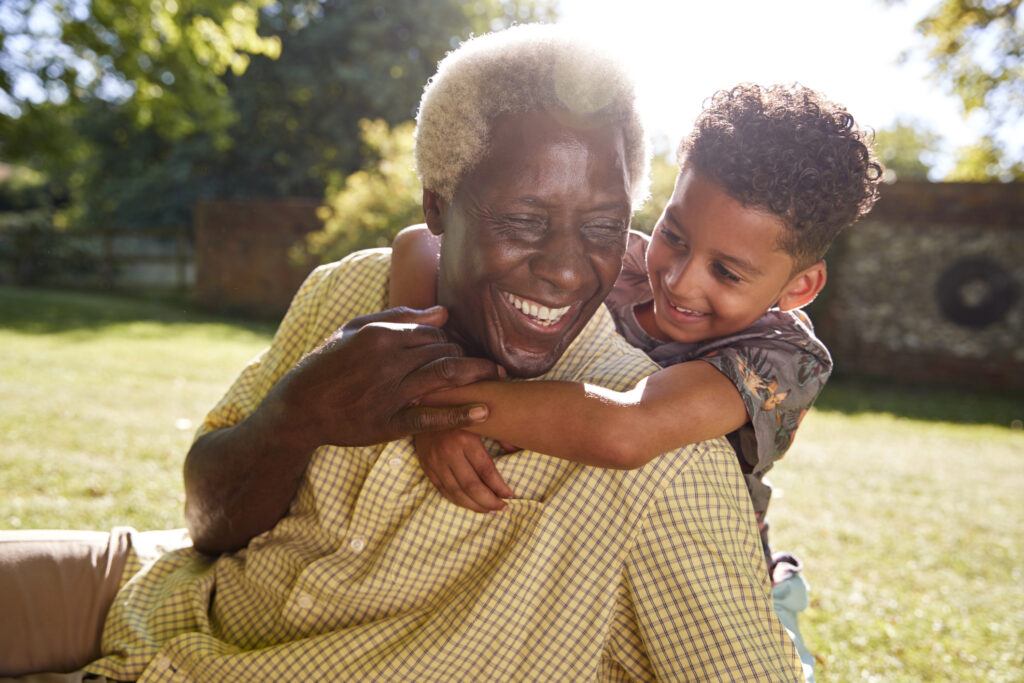
Helping a Senior Accept Visual Changes
Several eye diseases, which can have significant consequences for their quality and ability to function in everyday life, often affect the vision of seniors. For some people with impaired eyesight, it may result not only depression but also withdrawal from social contact or even idleness!
The visual changes that come with aging can be difficult for both caregivers and elders to deal with. What is an appropriate way of helping someone who’s lost their vision? Where should you turn when it comes time to help your parent or loved one learn about these new limitations on what they’re able to do without feeling overwhelmed themselves?
It is hard for caregivers and elders to deal with the visual changes that come from aging. What are some ways you can help someone who has lost their sight? Where should I go if my parent needs advice about these new limitations on what they’re able to do without feeling overwhelmed themselves?
Tips and Products for Helping a Senior with Low Vision
While each individual has different conditions, there are some general tips that can help those with visual impairments maintain independence. These include making sure they know what type of modification is being made to their environment and behavior, and offering advice on products which would enhance functional abilities.
How To Help Elderly With Vision Problems – Great Lighting
When caring for a loved one with low vision, it is important to keep their surroundings well-lit. However, you must also be mindful of glare, which can be extremely distracting and uncomfortable. You can combat glare by using specialized lamps or bulbs that create more contrast, as well as covering reflective surfaces. It is important to ensure that appropriate lighting is provided for all activities your loved one takes part in.
Task lighting is best suited for specific activities, like reading, playing cards, or crafting. For example, a small goose neck or clip-on lamp can be directed at the task at hand. Another type of task lighting that can be used in the kitchen and other larger work areas is under-counter lighting.
Discrepancies in lighting can distract and make it difficult to complete tasks. Ideally, the lighting in a room should be consistent, with no large discrepancies in brightness. When task lighting is increased, they should also increase the surrounding room lighting to maintain a consistent level of brightness. Keeping lights on during daytime hours can help to equalize lighting from both indoor and outdoor sources.
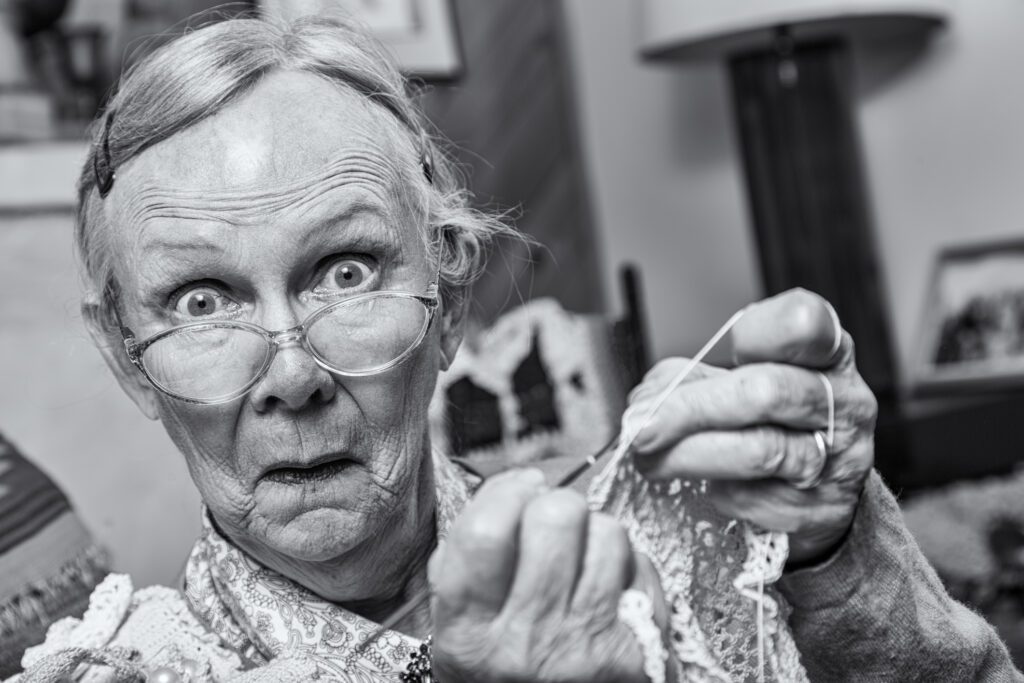
How To Help Elderly With Vision Problems – Minimize Fall Risks
To reduce the risk of tripping and falling in the dark, use nightlights in bedrooms, hallways, and bathrooms. Eliminate clutter and remove potential hazards, such as throw rugs and electrical cords. Consider replacing or moving short or hard-to-see furniture, such as a glass coffee or side table. Create well-lit pathways with comfortable and secure footing.
You may need to reposition some furniture to make the home easier to navigate. This can disorient at first, so provide your loved one with extra help to get around until they have memorized the new layout. Larger-scale rearrangements may not be advisable for some seniors, depending on their health and mobility.
How To Help Elderly With Vision Problems – Household Organization
Designate specific spots for commonly used items and be sure to return objects to the same place every time; this will help your loved one always know where things are. Sometimes using a basket to store like objects can make it easier to find things like keys, remotes to electronics and other insignificant items.
Combining tactile and visual systems can help seniors more easily navigate their environment, too. Tactile systems are helpful for those with limited or no vision, or for those whose visual abilities change from day to day. An example of a tactile system is placing rubber bands, felt, or raised plastic on door frames and cabinets.
Visual systems make use of any remaining vision to identify and organize things. Common examples include large labels or colored stickers or tapes to differentiate individual items or identify collections of items. In order to ensure proper identification and organization, it is important that it kept visual systems in good condition.
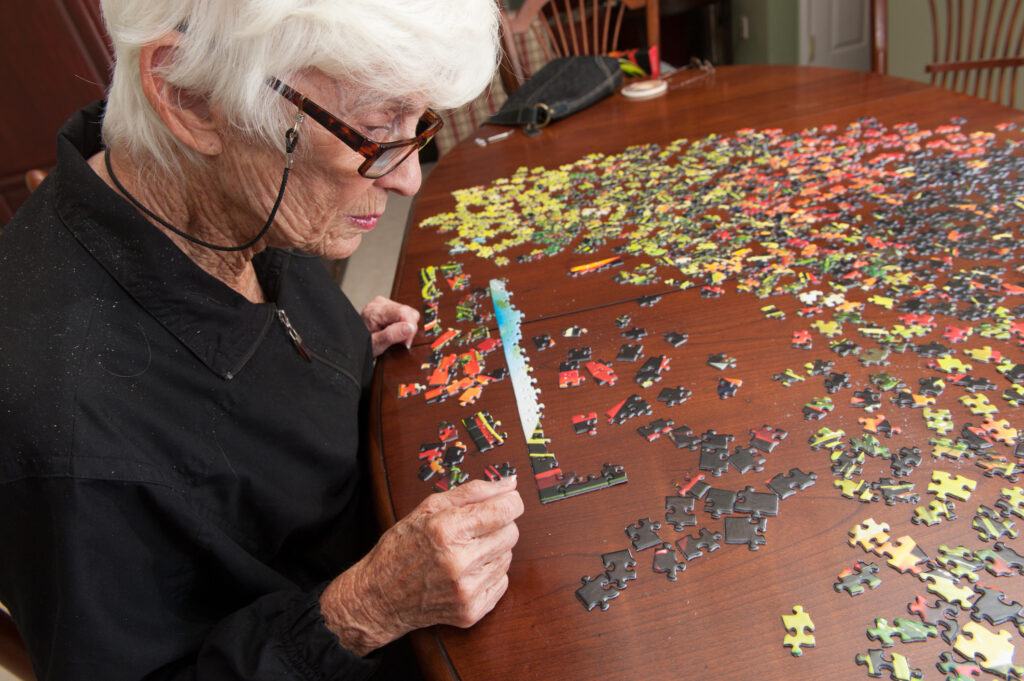
How To Help Elderly With Vision Problems – Contrasting Colors
The juxtaposition of light and dark colors can make daily activities much easier for a person who still has some remaining vision. Like colors can make it difficult for those with visual impairments to detect doorways, stairs and furniture and especially smaller objects that blend into their surroundings. Contrasting colors can help these individuals to more easily navigate their environment.
There is a simple way to help extend independence and promote safety in settings like bathrooms – using different colored cutting boards for preparing fresh foods. For example, providing a white cutting board for preparing darker foods like apples and a dark board for lighter foods like onions can help avoid confusion. This concept especially applies in settings like bathrooms, which are monotone. Choose towels, washcloths and bathing supplies in shades that contrast with the predominant color in the room.
Adding a bright color to the door jambs and edges of steps can help improve safety in the home. They achieve this by creating a visual contrast that makes it easier for people to see these danger areas. You can use brightly colored tape to highlight these areas, or paint them a contrasting color to the surrounding area.
How To Help Elderly With Vision Problems -Think Big
Magnification is an essential tool for those with low vision, and magnifying devices range from very simple to technologically advanced. Look for items that come with larger print/buttons, such as books, checkbooks, calendars, calculators, remote control units, clocks, watches, appointment books and labels. Some helpful technological advancements include large screen displays, increased magnification and color contrast, and voice-activated features.
For items that do not come in low-vision versions, magnifiers can be very helpful. Electronic magnification units use a camera to capture an image and project it onto a built-in monitor, a television screen or a computer screen. These units can read bills and write checks, read books, look at pictures, and more.
Through low vision supply companies, portable video magnifiers come in a variety of sizes, styles, and colors. You can choose the model that best suits your needs based on image size, contrast, and color or black and white.
For those seniors who are comfortable and efficient with technology, various adaptive equipment is available to make computer use easier. This includes software that enlarges screens, keyboards with large letters, and near telescopic systems that help you see the screen from a distance.

How To Help Elderly With Vision Problems – Find a Low Vision Specialist
If you are experiencing vision impairment, it is important to consult with a low vision specialist. These specialists have the knowledge and experience to devise personalized solutions for your specific needs. Vision rehabilitation can help with mobility training and methods of organizing, marking, and labeling household items.
These specialists are also familiar with resources for obtaining low vision aids and can provide instruction on how to use them properly. Many vision rehabilitation programs offer mental health services to help participants cope with the anxiety or depression that often accompanies vision loss.
How To Help Elderly With Vision Problems – Provide Moral Support
Creating a strong support system for those with new or worsening visual impairments is key. Encouraging your loved one to remain active with friends and stick to hobbies and pastimes they enjoy can help them maintain their confidence. Offer to accompany them or assist them with these activities to help ease their transition.
Help your loved one feel safe. If they are experiencing hallucinations, let them know you care about what’s happening in their lives by talking openly with each other without judgement or criticism; this will help reduce any sense of stigma associated with CBS- hallucinations can be upsetting, but don’t worry because it doesn’t pose an issue unless there is another complicating factor like dementia.
When seniors worry that their sight impairments will make it difficult for them to live independently, try reassuring your loved one by suggesting resources and tips on how they can remain independent. Resources such as home care agencies or personal assistants can provide peace of mind while also helping with day-to-day tasks like cooking meals, taking medications at the right time each morning/evening etc., which will allow these individuals stay safe in their own homes!
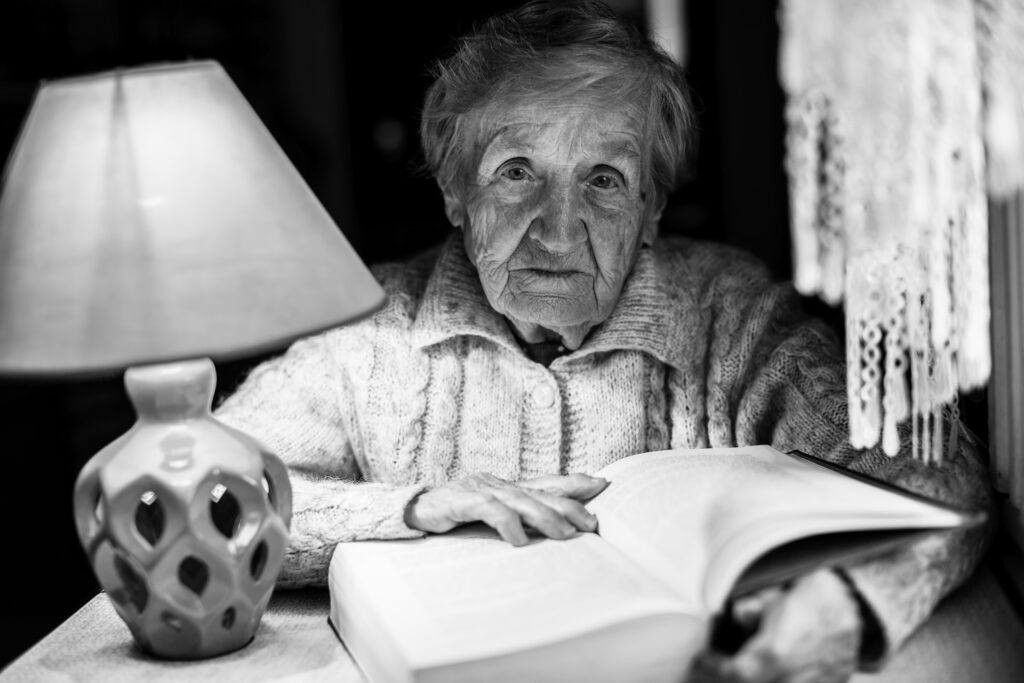
What are common eye problems with elderly?
The eyes are an important part of your body. With all the different problems that can occur, such as presbyopia (gradually losing accommodation or focusing ability), glaucoma, dry eye disease cataracts & temporal arthritis – it’s best to keep regular appointments with a professional Eye Care providers!
Conclusion
There are many ways in which you can help elderly loved ones with vision problems. You can help them stay independent by ensuring that their home is well lit and clutter-free, and by assisting them with activities such as cooking, cleaning, and grooming. You can also help them stay connected to their community by taking them to social events and appointments, and by helping them to stay connected with friends and family online. Be patient and supportive and always be there for them when they need you.
